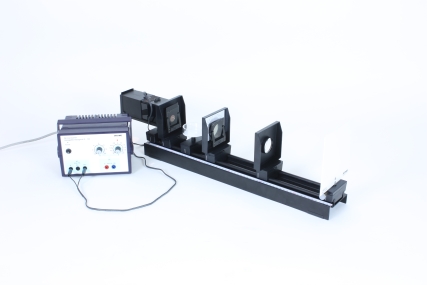Principle
Optically active substances such as sugar solution and quartz rotate the polarization plane of the Iight passing through them. The optical activity is brought about by the form of the sugar molecules in the sugar solution, or by the grid structure of the quartz.
The angle a, by which the polarization plane of Iight is rotated in a sugar solution, depends on the wavelength 7 of the light, the concentration c of the solution and on the Iayer thickness d (path travelled by the light in the solution).
This phenomenon is called rotational dispersion and we use it, for instance, to determine the concentration of optically active substances in solutions. The device used to determine in particular the concentration of sugar solutions is known as the saccharimeter. There are dextrorotatory (right-handed) and laevo-rotatory (left-handed) optically active substances. In this experiment the students should become familiar with the phenomenon of rotational dispersion, its dependence on c and d, and the basic design of a saccharimeter.
Benefits
- Multifunctional light box - All-in-one: Can be used for geometric optics on the table, colour mixing and on an optical bench
- Extension with others sets at anytime, no additional light sources needed, recognition value for students
Tasks
- Set up a mode) of a saccharimeter and investigate what happens to a sugar solution when polarized Iight of various wavelengths passes through it.
- Find out also, whether and to what extent the observed phenomenon is dependent on the layerthickness and concentration of the sugar solution.

